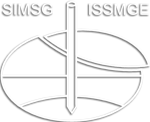Abiotic and microbial remediation of groundwater impacted by metalloids
Abiotic and microbial remediation of groundwater impacted by metalloids
The release of metalloids such as selenium (Se), arsenic (As), and chromium (Cr) into the environment from both natural and anthropogenic sources threatens aquatic systems. These elements are redox active and their mobility and environmental impact depend strongly on their oxidation state. The removal of these oxyanions was investigated by a combination of abiotic and microbial processes. Abiotic processes focused on sorption on porous sorbents, zeolites and biochar. These sorbents were modified by iron coatings precipitated in situ. Microbial processes were carried out with either unmodified or iron-modified zeolite-filled columns with anaerobic sludge as microbial inoculum for the columns. Lactate served as an electron donor and the residence time was 100 minutes. In selenium experiments, regardless of selenium speciation, maximum selenium removal was 99% for Se concentration of 790 mg/L. Based on 16S rRNA sequencing, Veillonella, Bacteroides, and Escherichia were the most dominant selenium-reducers in biofilm communities. In batch experiments, for Cr concentration of 250 mg/L, 0.01 M NaNO3 ionic strength, and sorbent concentration of 5 g/L, Cr removal by iron-coated biochar was 99.8%. The Cr removal using unmodified biochar was 95% after 5 days of equilibration time. Microbial removal of chromate in zeolite columns was approximately 60-70%. Arsenate was more efficiently removed compared to arsenite. In all cases, in addition to the effective removal of the metalloids of arsenic, chromium, and selenium, other oxyanions, such as nitrate and sulphate, were effectively removed in columns with microbial activity, although the presence of these anions dramatically affected the makeup of the microbial community.
I. Kulasekara; D. Rajapakshe; T. Quary; Y. Zhang; C. Papelis
9th International Congress on Environmental Geotechnics (ICEG2023)
Contaminant Fate and Transport
https://doi.org/10.53243/ICEG2023-301
